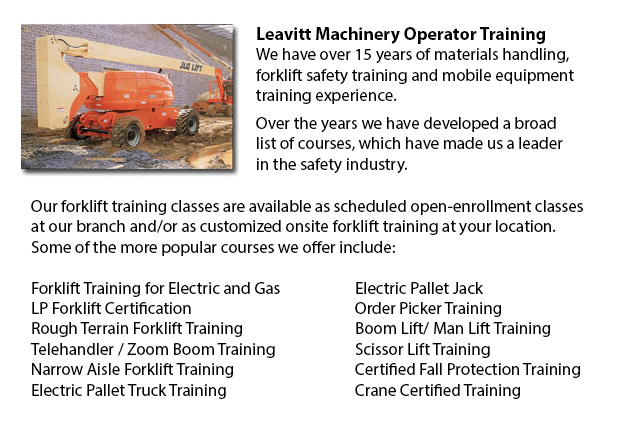
London Aerial Lift Safety Training - There are roughly 26 to 30 construction fatalities in North America due to the use of aerial lifts. Nearly all of the individuals killed are craftsmen like for example electrical workers, laborers, painters, ironworkers or carpenters. Nearly all deaths are caused by falls, tip-overs and electrocutions. The greatest danger is from boom-supported lifts, like bucket trucks and cherry pickers. The majority of the deaths are connected to this particular type of lift, with the rest involving scissor lifts. Other dangers consist of being thrown out of a bucket, being struck by falling objects, and being caught between the guardrail or lift bucket and a thing, like a joist or steel beam.
The safe operation of an aerial lift requires a check on the following things before utilizing the device: emergency and operating controls, safety devices, personal fall protection gear, and tires and wheels. Inspect for possible leaks in the air, fuel-system, hydraulic fluid. Inspect the device for loose or missing parts.
The place where the device will be utilized must be carefully checked for potential hazards, like for example holes, bumps, debris and drop-offs. Overhead power lines must be closely monitored or avoided. It is recommended that aerial lift devices be utilized on surfaces which are level and stable. Do not work on steep slopes which exceed slope limitations specified by the manufacturer. Even on a level slope, brakes, wheel chocks and outriggers should be set.
Employers are needed to provide aerial lift operators and maintenance mechanics with the proper instruction manuals. Operators and mechanics have to be trained by a certified person experienced with the relevant aerial lift model.
Aerial Lift Safety Guidelines:
o Close lift platform chains or doors prior to operating.
o Climbing on and leaning over guardrails is prohibited. Stand on the platform or floor of the bucket.
o Stay within manufacturer's load-capacity limits.
o When working near traffic, make use of proper work-zone warnings, like signs and cones.
Electrocutions are preventable if safety procedures are followed. Stay as far away from power lines - at least 10 feet. Trained electrical workers should insulate and/or de-energize power lines. People working must utilize personal protective equipment and tools, like insulated bucket. Nevertheless, an insulated bucket does not protect from electrocution if, for example, the individual working touches a different wire providing a path to the ground.
When in the bucket, workers must prevent possible falls by securing themselves to the guardrails by utilizing a positioning device or a full-body harness. If there is an anchorage inside the bucket, a positioning belt together with a short lanyard is acceptable.
Tip-overs are preventable by following the manufacturer's instructions. Unless otherwise specified by the manufacturer, never drive whilst the lift platform is elevated. Adhere to the device's horizontal and vertical reach limitations, and never exceed the load-capacity that is specified.
-
London Crane License
London Crane License - Crane operators ought to be "credentialed", that means they must possess a crane operator license or certification. Credentialing is considered a mandatory governmental requirement in order to practice as a crane operator. Obta... More -
London Heavy Equipment Operator Training
London Heavy Equipment Operator Training - Training facilities which offer quality standards in the industry and not just provide field performing tasks but added equipment training are highly sought after. Accredited schools provide students the kno... More -
Telehandler Training in London
Telescopic handlers usually referred to as telehandlers for short, are a very popular piece of heavy construction machinery. They are usually utilized in the agriculture and construction industries. These machines have maximum reaching capacity and c... More -
London Boom Lift Certification
London Boom Lift Certification - Elevated work platforms allow maintenance operations and work to be carried out at heights which could not be reached by any other means. Workers utilizing boom lifts and scissor lifts can learn how to safely operate... More -
London Fall Protection Ticket
London Fall Protection Ticket - Fall-related accidents are the number one reason of death within the construction industry. The potential for fall incidents really increases based upon the kind of work that is being completed within your workplace. T... More -
London Forklift Safety Training
London Forklift Safety Training - Anybody who wants to operate a lift truck should take a forklift safety training program to become a certified forklift truck operator. There are several ways to obtain forklift training. Programs are provided throug... More -
Operator Safety Training, Re-Qualification Training, In-House Instructor Training in London
Lift trucks are used in nearly all warehouse operations and in boat yards and in industrial construction sites. The reach feature of a forklift is a vital component used in various applications like for instance whenever a shelving system is being us... More -
London Boom Lift Safety Training
London Boom Lift Safey Training - Boom lifts are a type of elevated work platform or aerial lifting device that are commonly utilized in construction, industry, and warehousing. Boom lifts can be used in practically any surroundings due to their vers... More

Forklift Certification London
TOLL FREE: 1-888-254-6157
London, Ontario
forkliftcertificationlondon.com
Email Us
About Us


